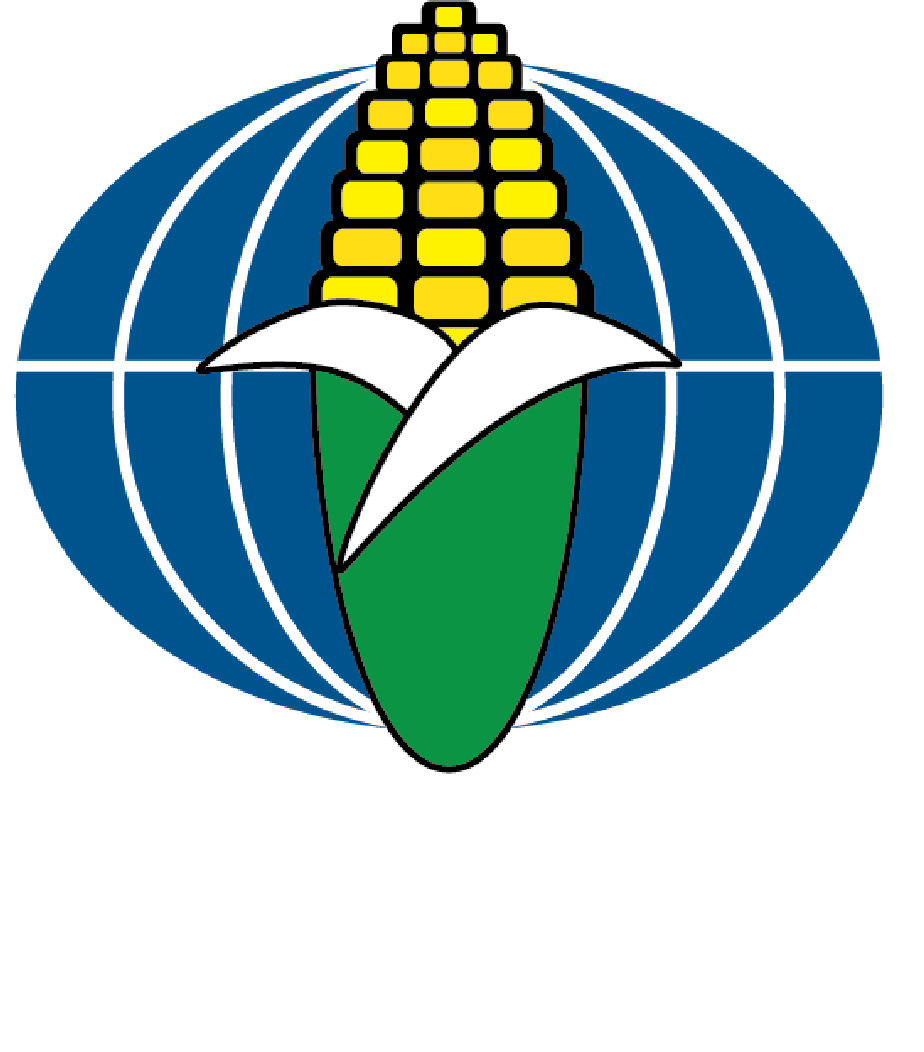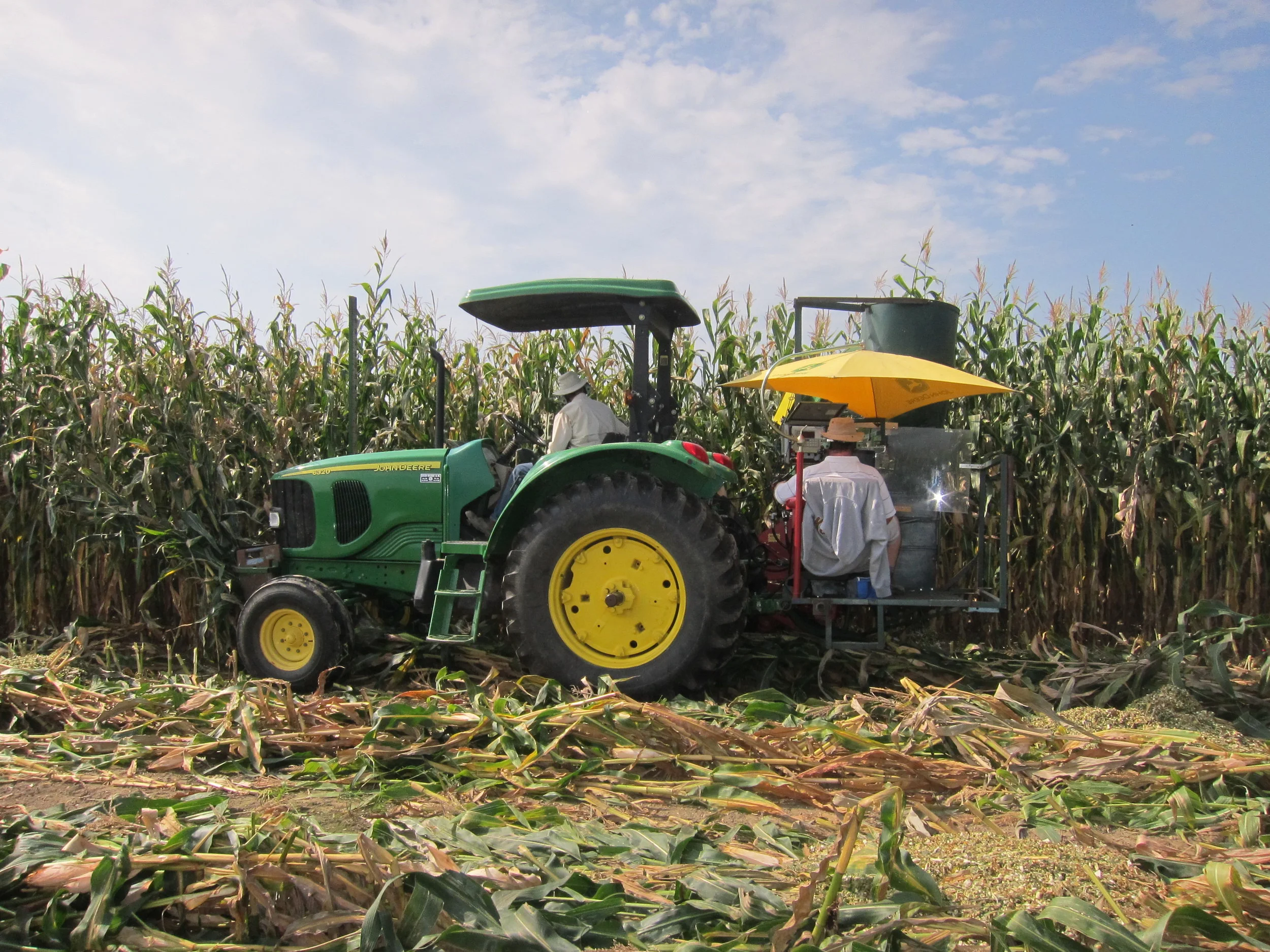We lead the industry in breeding and testing silage-specific corn hybrids.
Our Mission
Since 1985, we have been dedicated to creating silage-specific corn hybrids that meet the complex agronomic and nutritional requirements of the dairy and beef industries. This goal is at the heart of our breeding program and guides our process of plant characteristic selection. It has led us to develop a unique corn silage testing program to assess our hybrids based on their total plant silage performance. We bring the best of our hybrids to market through long term partnerships with seed companies around the world.
We strive to serve the diverse needs of our customers swiftly and with integrity, and to make our products available with either the latest trait packages or as non-GMO.
Breeding
Breeding occurs in a nursery field that is composed of thousands of short rows of different types of corn. Each row is identified by a number, which corresponds to a genealogical history and observational notes. In this nursery setting we develop robust inbred parent lines that have been selected for silage-specific characteristics. It is a hands-on process of observing and hand-pollinating. Inbred development takes a six to twelve generations. During these seasons our advancing inbred parents are exposed to a wide range of environmental pressures from insect damage and extreme weather events, to moisture stresses and diseases. Each event is an opportunity to advance only our best genetics and eliminate the rest. We select for disease and mold resistance, slow drying, low ear position on the plant and soft floury-type kernels on good, flexible stalks. We also select for seed production characteristics such as seed yield, and good pollen production.
Breeders Dr. Francis Glenn and daughter Margo Lee putting on shoot bags in our winter nursery in Chile. By growing a summer nursery in Canada and a winter nursery in Chile we can have two breeding generations per season.
A sample of our diverse commercial inbred parent lines that we have bred for silage specific characteristics. Each has proven itself to be a robust pollen or seed parent with the ability to combine with other inbred parent line(s) to produce elite silage-specific hybrids. It is the inbred parent seed that we sell to our seed company customers.
yield testing
We test hundreds of hybrid combinations in replicated yield trials at multiple locations for several seasons before the very best are recommended for advancement to the marketplace. In order to test hybrids for silage performance, we use a John Deere HarvestLab that has been calibrated by Sapienza Analytica, in conjunction with visual observation. In order to make it to the marketplace, a hybrid must excel in these categories:
Dry Matter Yield (high), Starch Content (high), NDF Content (moderate), NDF Digestibility (high), Protein (moderate-high), Moisture Content (maturity rating), Stay Green (good), Root Scoring (good), Plant Height (moderate-high), Ear Height (moderate-low), Number of leaves above the ear (8-10), Ear Rating (good), Stalk Rating (good).
silage testing video
A sample of our commercial silage-specific corn hybrids that have proven themselves during our rigorous silage testing program. Multiple repetitions of each hybrid have performed in a range of locations through various environmental pressures over several seasons before they are recommended to our customers as a product for them to test in their environment before they come to market.
MUSINGS ON STARCH ANALYSIS
At Glenn Seed, we have gone to considerable length to get to the bottom of starch analysis for our hybrids. Over time, we have discovered that these unique plant types pose new challenges to industry standard tests:
NIR ANALYSIS
NIRs don’t always recognize and give credit to floury starch since they have generally been calibrated to samples of corn silage that contain mostly vitreous, light transmitting starch rather than opaque, light absorbing starch. The second challenge is the ability of the NIR to “see” all of the starch. When a grain-type kernel travels through the chopper, it is fractured into a few large chunks which are easy for the NIR to read. A floury kernel is moist, soft and it smears easily all over stalk and leaf fragments during chopping. As a result, much of it may be hidden from the light that is emitted by the NIR, making it invisible for its analysis.
STARCH DIGESTIBILITY LAB ANALYSIS
Starch digestibility tests can be very misleading when comparing one of our silage-specific hybrids to a dual purpose or BMR hybrid. For repeatability of results, all labs dry and grind samples. Floury kernels have been bred to fracture into small particles during chopping and chewing, but the act of grinding reduces vitreous kernels into particles that are much smaller and more digestible than they would be when fed as silage. Grinding reduces apparent starch digestibility differences between kernel types, making hybrids with vitreous kernel types appear to be more digestible than they are and obscuring the natural boost in starch digestibility that our products bring to the ration.






